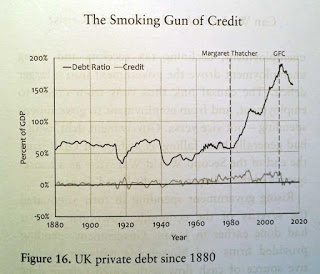Summary:
Paul Claireaux @PaulClaireaux Where's the evidence for the debt explosion? Right here ... from @ProfSteveKeen 's excellent short book, 'Can we avoid another financial crisis?' (Deffo worth a read that one) (similar pic applies to USA) Stacey HerbertThe top 1% have kept pace with money printing so they are doing as well as they were in 1970, it's just that everyone else has lost their purchasing power and thus the wealth and income gap has widened.In 1970, the average annual salary in America equalled 159 ounces of gold per year. Today that average salary is 41 ounces of gold per year.
Topics:
Mike Norman considers the following as important:
This could be interesting, too:
Paul Claireaux @PaulClaireaux Where's the evidence for the debt explosion? Right here ... from @ProfSteveKeen 's excellent short book, 'Can we avoid another financial crisis?' (Deffo worth a read that one) (similar pic applies to USA) Stacey HerbertThe top 1% have kept pace with money printing so they are doing as well as they were in 1970, it's just that everyone else has lost their purchasing power and thus the wealth and income gap has widened.In 1970, the average annual salary in America equalled 159 ounces of gold per year. Today that average salary is 41 ounces of gold per year.
Topics:
Mike Norman considers the following as important:
This could be interesting, too:
Robert Vienneau writes Austrian Capital Theory And Triple-Switching In The Corn-Tractor Model
Mike Norman writes The Accursed Tariffs — NeilW
Mike Norman writes IRS has agreed to share migrants’ tax information with ICE
Mike Norman writes Trump’s “Liberation Day”: Another PR Gag, or Global Reorientation Turning Point? — Simplicius
Stacey Herbert
The top 1% have kept pace with money printing so they are doing as well as they were in 1970, it's just that everyone else has lost their purchasing power and thus the wealth and income gap has widened.
In 1970, the average annual salary in America equalled 159 ounces of gold per year. Today that average salary is 41 ounces of gold per year.

